Last updated on June 14th, 2023 at 07:28 am
Many aroids are grown for their catchy look and adaptability as a houseplant. Originally, tropical forest inhabitants, some people think aroids can survive in an environment with low sunlight. Well, the answer is not wrong but it’s also not 100% true either. In this article, we will explain why and what the best grow lights for aroids are, along with types of sun-loving aroids plus useful tips to make your aroids happier. Enjoy!
Table of Contents
How many lights do aroids need?
Do aroids need sunlight? Yes, aroids do need sunlight. However, it’s certainly not the same as any other house plant. To get a more complete explanation, we can divide plants’ sunlight requirements into 5 categories.
- The first one is full sun, which means plants get 6 or more hours of direct sun exposure each day.
- Second is a light shade, that is receiving direct sun exposure between 3 and 5 hours during summer.
- Third is partial shade, which can be interpreted as an area under or around trees or buildings where it blocks direct sunlight or an area that receives 2 hours of sunlight per day.
- Fourth is full shade, which determines an area with less than 1-hour sunlight exposure. It could also be an area where sunlight exposure is scattered throughout the day.
- Lastly, dense shade, which is also the most difficult area for plants to grow, receives little to no direct sunlight.
Most aroids fall into category number two and three, which are light and partial shade. Aroids evolved in such a way because in their natural habitat, they grow rapidly in the rainforest floor or tree trunks which are covered the most by canopies and tall trees around. This makes aroids can’t stand under the direct full sun for too long or it can cause their leaves to burn. So aroids do love sunlight but they need it indirectly. They’re a part of the tropical plants kingdom after all.
Tips: During winter, most aroids will go dormant or “winter hibernation” due to temperature drops and shorter daylight hours. You can expect them to lose their leaves and stems. Do not worry, they do this to conserve more energy, and usually, after winter ends, they will grow back to normal. You can bring back aroids to “life” by moving them inside. Place them in an area with indirect sunlight where the humidity level is above 70%. Do not forget to water and fertilize regularly to promote new growth. Porous soil with good drainage and aeration is also good for aroids.
Another tip: Also consider the heat intensity where you plant your aroids. For example, the full summer sun in tropical countries might be more intense than in four-seasoned countries. So an hour of direct sunlight in those tropical countries may be too intense for your aroids. One way to fix this problem is to try switching your aroids into different places, and see which place has the foremost accurate sunlight.
Types of sun-loving aroids.
Aroids come in numerous sizes and colors. They could be pink, golden-yellow, orange, milky white, or even black! Get to know these marvelous and popular sun-loving aroids before you decide to bring them home.
1. Elephant’s Ear or Giant Taro (Alocasia)
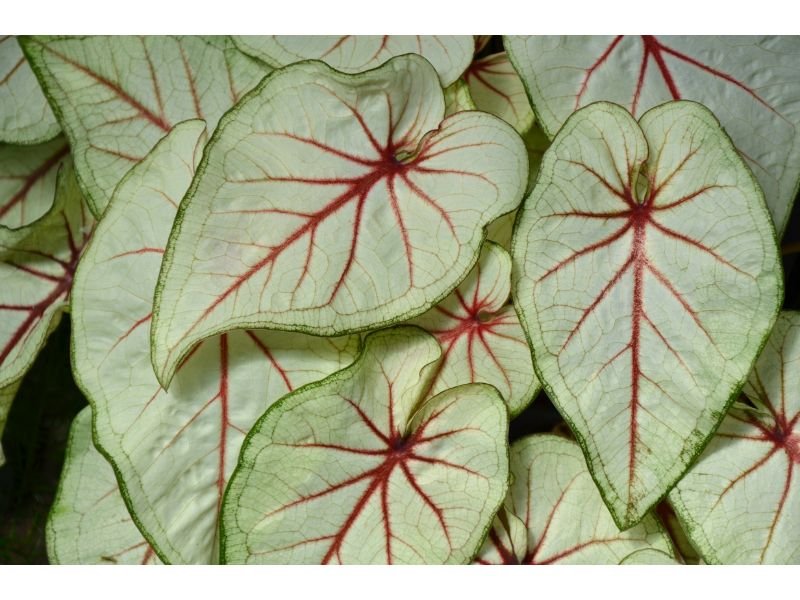
Elephant’s ear is a low-maintenance perennial plant from several tropical areas of Asia. They’re well known for their shape, which resembles an elephant’s ear. As a massive plant, alocasia can grow anywhere from 2 to 9 feet tall. Flowers are rarely seen, and leaves can be dark or bright green with white veins or vice versa, depending on the cultivars/varieties.
How much sun does an elephant’s ear need: Indirect full sun and partial shade.
Good for indoor and outdoor: Yes, but depends on which variety. One of the elephant’s ear varieties, alocasia portora, might be too huge to be planted indoors.
Poisonous to humans: Yes, all parts of the elephant’s ear are severely poisonous if eaten. Direct contact with the skin might be irritating.
2. Flamingo Flower (Anthurium)

This exotic tropical perennial plant is commonly grown for its shiny green heart-shaped leaf and pink, magenta, dark pink, gold, yellow, or green variegated spathes and yellow spadixes. They’re much smaller than an elephant’s ear, with only around 2 to 3 feet tall and 1 to 2 feet wide.
How much sun do flamingo flowers need: Indirect full sun and partial shade.
Good for indoors and outdoors: Yes, you can plant the flamingo flower in a container and move them indoors or outdoors.
Poisonous to humans: Yes, all parts of the flamingo flower are poisonous if consumed in large portions. Can cause mouth burning and skin irritation.
3. Fancy-leaved Caladium or Angel Wings (Caladium bicolor)
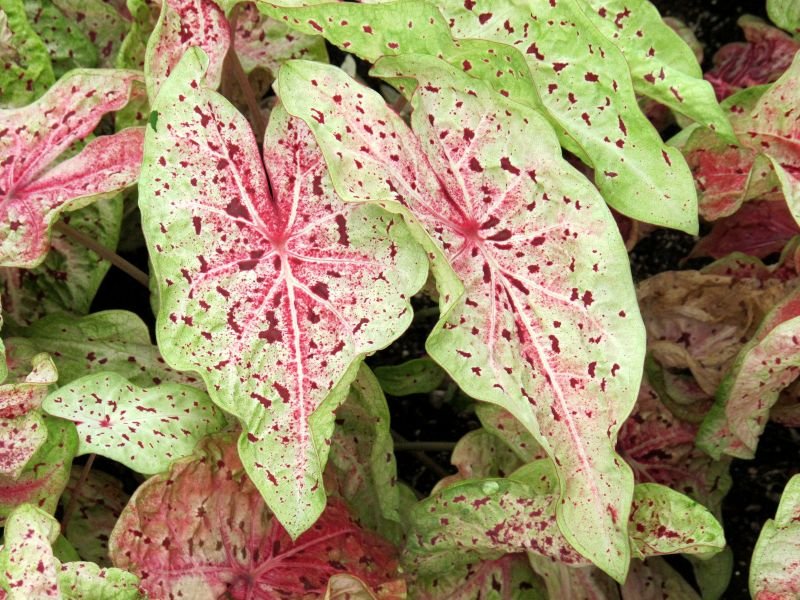
A highly anticipated houseplant, fancy-leaved caladium is a perennial plant that can be grown as an annual. Its arrow-head-shaped leaves are ranging in color combinations such as deep pink, dark green, and white. It also produces small, less than 1-inch flowers. They can grow around 2 feet in height and width.
How much sun does fancy-leaved caladium need: Partial shade and full shade.
Good for indoor and outdoor: Yes.
Poisonous to humans: Yes, all parts of fancy-leaved caladium are moderately poisonous. May cause burning lips, nausea, diarrhea, and vomiting if eaten.
4. Philodendron Pink Princess
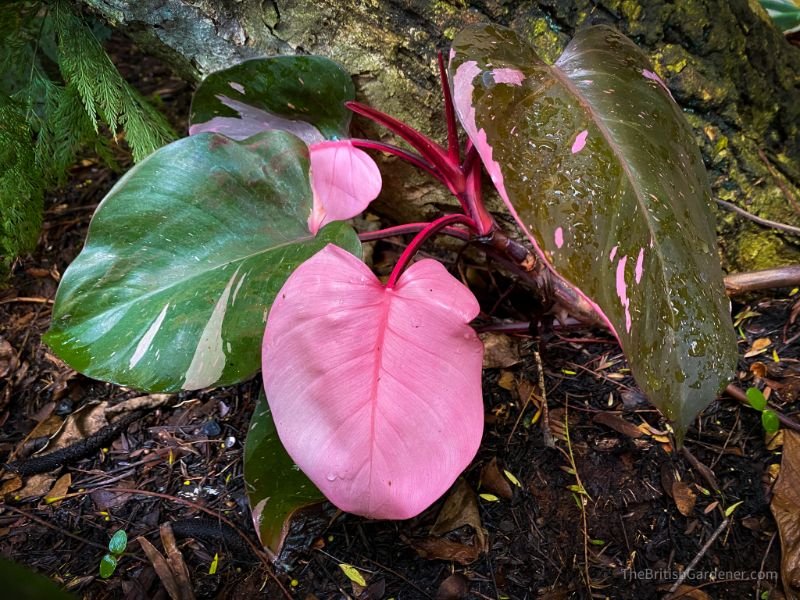
This expensive variegated species of philodendron is known for its beautiful partial bright pink and green shiny, almost heart-shaped leaves and burgundy stems. They can reach 4 feet tall, but when planted inside a container or pot, they only grow up to 2 feet tall.
How much sun does philodendron pink princess need: Full shade and partial shade.
Good for indoor and outdoor: Yes, but they’re mainly indoor ornamental pots or container plants.
Poisonous to humans: Yes, all parts of the philodendron pink princess are mildly poisonous. Also, keep this plant away from pets.
5. Philodendron Grazielae

Philodendron grazielae is a rare stunning climbing ornamental plant with thick, small, shiny, and glossy green heart-shaped leaves. Mature philodendron grazielae can reach a height of 18 to 24 inches.
How much sun do philodendron grazielae need: Indirect full sun and partial shade.
Good for indoors and outdoors: Yes, but it’s best to grow philodendron grazielae outdoors in areas with a hardiness zone of 10 to 12.
Poisonous to humans: Yes, philodendron grazielae is severely toxic for both humans and pets.
6. Philodendron Prince of Orange
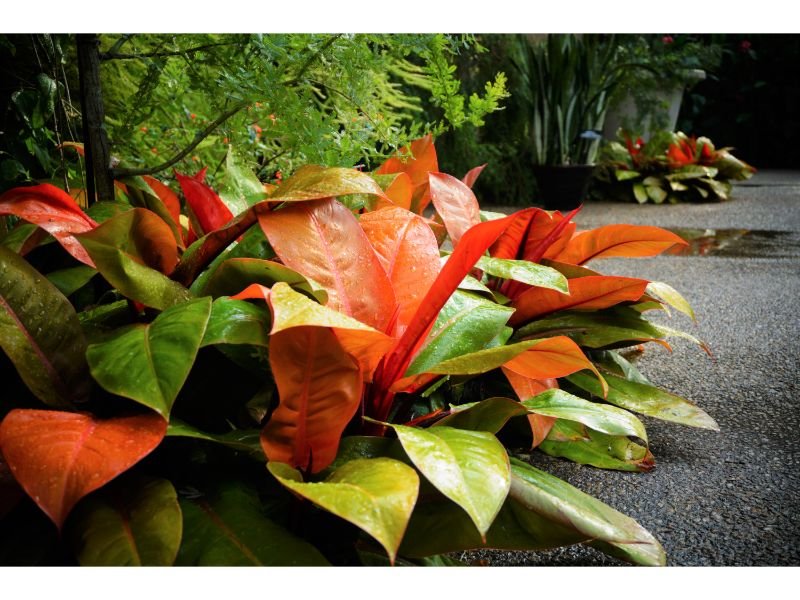
As rare as philodendron grazielae, philodendron prince of orange is another magnificent variegation of hybrid philodendrons. Their elongated oval leaves change color from time to time, from yellow, orange, copper, reddish-orange, to green. It grows about 2 feet tall.
How much sun do philodendron prince of orange need: Indirect full sun and light shade.
Good for indoors and outdoors: Yes, but it’s best to grow philodendron grazielae outdoors in areas with a hardiness zone of 10 to 12.
Poisonous to humans: Yes, philodendron grazielae is moderately toxic for both humans and pets if ingested.
7. Devil’s Ivy (Epipremnum aureum)

Also known as the taro vine, devil’s ivy is a tropical perennial vine plant. They have shiny, heart-shaped green leaves with a hint of yellow. If grown in the wild, devil’s ivy can climb up to 20 meters or 65 feet tall!
How much sun does devil’s ivy need: Partial shade, light shade, and full shade.
Good for indoor and outdoor: Yes.
Poisonous to humans: Yes, all parts of devil’s ivy have medium toxicity levels and can be irritating if touched or eaten.
8. Monstera Deliciosa or Ceriman

Most monstera deliciosa grow anywhere between 6 to 8 feet as houseplants. They’re well-known for their green, gigantic, and glossy split leaves. It has tiny, less than 6 inches white spadix flowers.
How much sun do monstera deliciosa need: Partial shade and full shade.
Good for indoor and outdoor: Yes.
Poisonous to humans: Yes, all parts of ceriman are poisonous but the level of toxicity is low.
9. Monstera Adansonii

Monstera adansonii or swiss cheese plant is a large flowering plant native to Central America. It has an elongated oval or heart-shaped leaves with unique holes that develop as the plant matures. They grow around 6 to 8 feet tall and can spread as wide as 2 feet.
How much sun do monstera adansonii need: Indirect full sun and partial shade.
Good for indoor and outdoor: Yes.
Poisonous to humans: Yes, all parts of monstera adansonii are mildly poisonous to humans but severely poisonous to animals especially to pets like cats and dogs.
10. Monstera Lechleriana

Monstera lechleriana is often confused with monstera adansonii. They both come from tropical and subtropical countries of Central and South America. But how to differentiate monstera lechleriana and monstera adansonii? The easiest way is by looking at the holes in both plants. Monstera lechleriana has fewer holes in its leaves; some parts of its leaf may not have holes at all. While monstera adansonii have more and also smaller holes. Monstera lechleriana can grow up to 6 feet or more when planted outdoors.
How much sun do monstera lechleriana need: Partial shade and light shade.
Good for indoor and outdoor: Yes.
Poisonous to humans: Yes, just like its look-alike, all parts of monstera lechleriana are harmful and poisonous to humans and pets.
11. Raven ZZ Plant

The most enchanting part about the raven ZZ plant is its color. It has the same leaf shape and size as the original ZZ (Zamioculcas zamiifolia) plant, but in time, the green color or raven ZZ plant will gradually change into almost black, deep dark purple. This slow-growing plant can grow up to 30 inches tall.
How much sun does raven zz plant need: Indirect full sun, light shade, and partial shade.
Good for indoor and outdoor: Yes. Commonly grown as indoor houseplants, raven zz plant can be planted outdoors in areas with hardiness zones of 9 and 10.
Poisonous to humans: Yes, all parts of raven zz plant are mildly poisonous.
12. Chameleon ZZ Plant
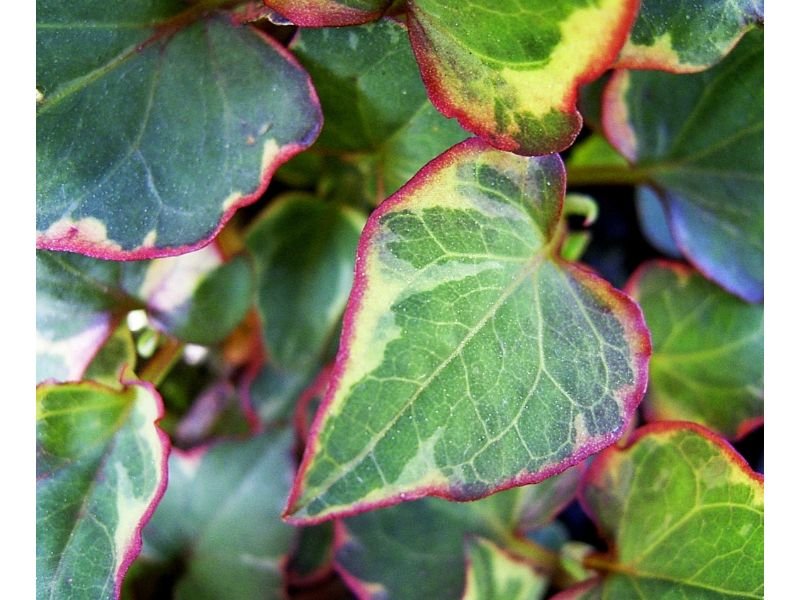
The chameleon ZZ plant is the opposite of the raven ZZ plant. It has bright golden-yellow leaves and also will get a darker green color as it ages. They can grow up to 60 inches tall or more. Its stems’ color is bright-colored too!
How much sun do chameleon ZZ plant need: Light shade and partial shade.
Good for indoor and outdoor: Yes.
Poisonous to humans: Yes, all parts of chameleon zz plant are moderately poisonous to humans and pets. The toxins from this plant can cause vomiting, diarrhea, stomach pain, and skin irritation.
13. Chinese Evergreen (Aglaomena)
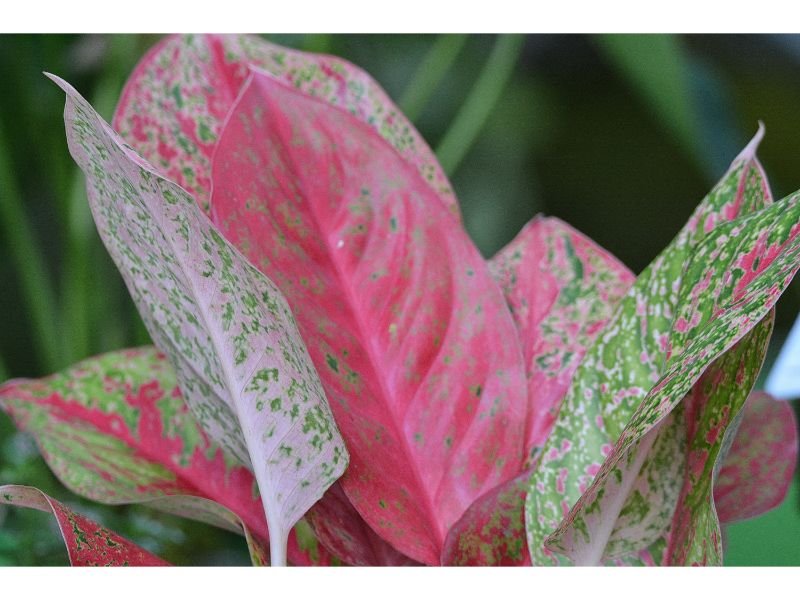
If you’re looking for drought-tolerant, tropical decorative plants, then Chinese evergreen is the right choice for you. A native to tropical and subtropical countries of Asia and New Guinea, it has thick, lance-shaped leaves with a variety of colors. It can be dark green, dark pink, bright pink, broken white, yellowish-golden, to yellowish-green. They grow around 60 to 80 centimeters.
How much sun does Chinese evergreen need: Indirect full sun, light shade, and partial shade.
Good for indoor and outdoor: Yes.
Poisonous to humans: Yes, all parts of Chinese evergreen contain low-severity toxicity if ingested or consumed by both humans and pets.
14. Mapoch Lily or Arum Lilies (Zantedeschia pentlandii)

This beautiful but deadly flower commonly grows in rocky areas in their native habitat in the Mapoch region, South Africa. It has funnel-shaped goldish-yellow or purplish-lavender petals and yellow or deep pink spadix. They’re adapted to grow around ponds with a size of around 1 to 2 feet in height and around 1 to 3 feet in width.
How much sun does mapoch lily need: Direct full sun.
Good for indoor and outdoor: Yes, but be cautious if you want to plant mapoch lilies indoors.
Poisonous to humans: Yes, all parts of mapoch lily are severely poisonous. It contains calcium oxalate crystals and possibly any other toxic chemicals.
15. Satin Photos (Scindapsus pictus)

Another drought-tolerant ornamental plant, satin photos is native to South-East Asia and is good for a beginner gardener. It has a winsome appearance with dark green, medium heart-shaped leaves that are covered with splashes of silverish-gray color. This perennial vine grows around 4 to 10 feet in length.
How much sun do satin photos need: Indirect full sun and light shade.
Good for indoor and outdoor: Yes.
Poisonous to humans: Yes, all parts of satin photos are moderately toxic due to its sap.
Signs your aroids do not get enough sun.
Sun is one of the crucial components for plant aroids’ growth as it helps them in the photosynthesis process. Hence lack of sun can lead to more serious issues. Here are the signs you must inspect.
1. Change in leaves color
Are your aroids’ leaves turning brown, yellowish, or pale? If your aroid has started to lose its charming leaves color, it could be a mix of things. From not getting adequate light, over or under-watering, problems with drainage, and diseases. Make sure to also check out the other causes.
2. Scanty or “leggy” growth
“Leggy” growth happens when the distance between one leaf to another is far apart, making the stems look sparse, and creating the appearance of that “skinny” or scanty growth. This unappealing distance is also known as internodal distance. It happens when aroids do not get enough sunlight, so to survive, they will lengthen their stems and branches to reach more light.
3. It “stretches” toward the source of light
If you see your plant bending towards the nearest source of light, well, that’s not a good sign. They may grow in an improper direction if left for a long time. To resolve this, try to switch each side of your aroids so they equally get enough light.
4. Abnormal growth
Abnormal growth includes no new growth, small leaf, sparse growth, or stems arch in an incorrect position. Less light equals less photosynthesis. Therefore, their growth will be stunted.
5. Dull and/or reverting colors
It happens the most with variegated aroids. For example, if you started to see philodendron pink princess pink leaves change to their original green color, then it might be because of the lack of sunlight.
How do you get enough light for plant aroids?
You can do several “tricks” to provide more light.
First, relocate your aroids and move them closer to windows, doors, or an open area with indirect sunlight (except for species like mapoch lily who prefer direct full sun).
Once you move the aroids into place with better light, then wait for a little bit until it grows back to normal.
Next is to do more analysis about which aroid species you’re interested in. If you plant them indoors, are they meant to be placed in north-facing windows or south-facing doors? How many hours of light do they need each day? Is that the right spot for your aroids to grow? Find as many resources as you can get as possible.
The last step is optional. If you’re facing winter right now or are living in an environment that is difficult to get the sunlight that the aroids need, you may consider buying and using grow lights for aroids.
Grow lights are artificial lights that are specially made to help grow plants indoors or in harsh winter seasons. They produce light that is similar to sunlight, to help aroids photosynthesize.
Most aroids need a minimum of 5000 to 6000 lumens to grow using growing lights. Place the grow lights at the upper part of the aroids, not too far but not too close either, around 6 to 12 inches high.
Let’s review.
To wrap up, most sun-loving aroids need either indirect full sun, light shade, or partial shade light to mimic their natural growing environment. Lack of sunlight in aroids can cause major problems like stunted growth, browning, and yellowing leaves.

Gardening is my passion and growing plants indoors has always been a stress relief for me. Grow a banana tree in my apartment once (although failed to produce bananas).






